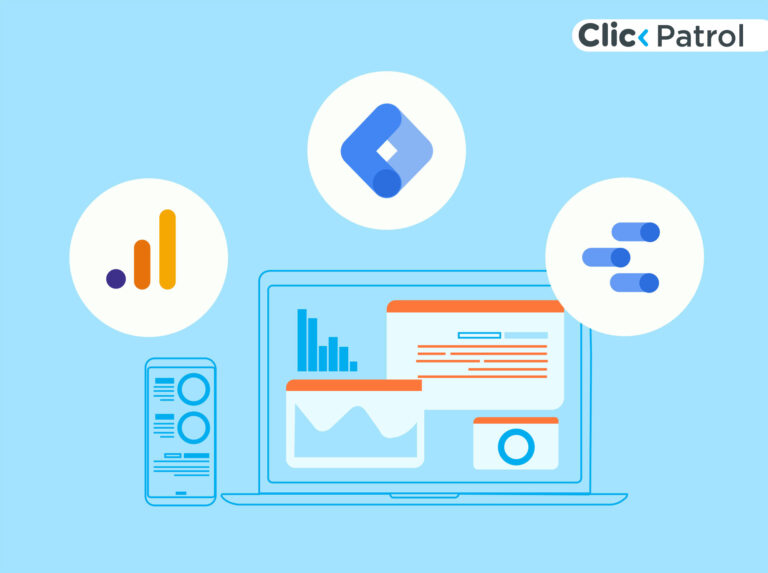Hidden browsers in iOS games are webviews that run in the background or in non visible parts of the app while ads are loaded and interacted with. Instead of a user intentionally tapping an ad and viewing a landing page, the game can trigger impressions and clicks automatically inside this hidden environment. To tracking systems, this can look like genuine user engagement even though real users may never see the ad, which results in fake clicks, inflated metrics and wasted ad spend.
Hidden Browsers in iOS Games Drive New Wave of Mobile Ad Fraud
Abisola Tanzako | Nov 26, 2025

Hidden browsers embedded in iOS mobile games are quietly inflating ad traffic and draining budgets, according to new findings that highlight a fast growing form of mobile ad fraud. As a click fraud protection vendor, we see this tactic distorting performance data, triggering invalid traffic and making it harder for marketers to trust what they see in their dashboards.
Table of Contents
How hidden in-app browsers fuel iOS mobile ad fraud
The core issue is simple but hard to spot. Some iOS game publishers are opening ads inside invisible or barely visible in-app browsers. From a measurement perspective, this can look like genuine user engagement on premium mobile inventory. In reality, many of these “users” never see or interact with the ads.
For PPC and user acquisition teams, this creates three direct risks: fake engagement on paid campaigns, inflated reach on supposedly high quality placements, and contaminated datasets used for bidding and optimization. Because the traffic technically comes from real devices and valid app installs, it often slips past basic fraud filters.
Key findings on hidden browser traffic
The source research highlights how widespread and harmful this pattern has become across iOS inventory. While exact impact will vary by advertiser and region, the headline findings are clear enough that performance marketers should treat this as a serious risk, not a niche technical issue.
- Hidden browsers in certain iOS games are generating large volumes of ad impressions and clicks that users never intentionally trigger.
- These hidden environments can simulate normal user flows, which helps them evade simple invalid traffic checks that rely only on IPs, user agents or click timestamps.
- Spikes were observed on specific app titles and publishers, rather than being evenly distributed across all iOS games, suggesting deliberate design choices.
- Campaigns buying in-app inventory through programmatic channels were particularly exposed, because the hidden traffic was mixed with legitimate supply.
- Advertisers reported wasted spend and misattributed performance, with optimization systems shifting budget toward the corrupted placements.
Why this matters for PPC, UA and media buying
For teams spending heavily on mobile app acquisition, these hidden browsers can quietly undermine entire strategies. If a large share of your in-app clicks is coming from unseen webviews, your cost per click, click through rate and early funnel engagement metrics all become unreliable.
Automated bidding in Google Ads, Meta Ads or other platforms will then push more budget into what looks like high performing inventory. That in turn starves genuinely effective placements of spend. Over time, your remarketing, lookalike and measurement models are all trained on skewed data.
We regularly see scenarios where a few aggressive mobile publishers, using tactics like hidden browsers, account for a disproportionate share of wasted budget. Because their traffic can pass basic viewability or fraud checks, they tend to persist in campaigns until someone performs a deeper audit of click behaviour, session quality and post click conversions.
Why basic fraud filters miss hidden browser activity
Traditional invalid traffic checks focus on obvious patterns: repeated clicks from the same IP, impossible click frequencies, data center traffic, or known bot signatures. Hidden browser activity inside iOS games can bypass these controls because it originates from normal consumer devices, often with legitimate identifiers and standard user agents.
The difference only becomes clear when you examine how the click behaves after the initial interaction. Fake or low intent traffic from hidden browsers often shows:
- Very short on site sessions on landing pages, even when creative and offer are aligned.
- Low scroll depth and minimal interaction with forms, buttons or content.
- Weak connection between click volume and downstream events like registrations, purchases or app installs.
- Unusual concentration of clicks from a small set of app bundle IDs or referrers.
This is where more advanced detection methods are essential. At ClickPatrol, we look at many behavioural data points per click to identify patterns consistent with hidden browsers and other in-app manipulations, then block those sources before they consume more of your budget.
Protecting ad budgets from hidden browser click fraud
From our experience working with performance marketers and agencies, the advertisers most at risk are those buying at scale across mobile games without granular controls or independent fraud protection in place.
Practical steps to reduce exposure include:
- Audit performance by app and placement. Identify iOS game titles that generate high click volumes but weak conversion or engagement.
- Correlate click data with on site behaviour. Check bounce rates, time on site and micro conversions for specific app sources.
- Use strict allow and block lists. Remove suspicious bundle IDs, publishers or exchanges that consistently deliver poor quality traffic.
- Monitor invalid traffic rates over time. Sudden swings in traffic quality from mobile in app inventory should trigger investigation.
- Deploy independent click fraud protection. Relying only on platform level filters leaves you exposed to newer, more subtle tactics like hidden browsers.
ClickPatrol is built precisely for this type of threat. Our systems inspect each click from iOS in app inventory in real time and compare its behaviour with known patterns of hidden webviews, fake interactions and farming devices. When we detect suspicious activity, we block the source from your Google Ads, Meta and Microsoft Ads campaigns so your budget is reserved for real users.
Cleaner data for better optimization decisions
One of the most damaging aspects of hidden browser fraud is the way it contaminates your analytics. Even if the wasted spend is a modest share of total budget, distorted click and conversion data can mislead optimization for months.
By filtering out hidden browser traffic and other invalid clicks, ClickPatrol helps restore a more accurate picture of which channels, creatives and audiences truly drive value. That cleaner data enables smarter bidding, better testing and more confident scaling of winning campaigns.
For advertisers concerned about the rise of mobile ad fraud in iOS games, this latest evidence around hidden browsers is a clear signal to review traffic quality controls. If you want to see how much of your current PPC spend might be affected, you can start a free trial of ClickPatrol or contact us to learn more about how we protect mobile campaigns from click fraud.
Frequently Asked Questions
-
What are hidden browsers in iOS games and how do they cause mobile ad fraud?
-
Why is hidden browser traffic in iOS games hard for PPC teams to detect?
Hidden browser traffic is difficult to detect because it usually comes from real devices with normal user agents and appears as standard in app activity. Basic invalid traffic filters that look only at IP addresses or raw click counts may see nothing unusual. The problems become visible only when you compare click activity with post click behaviour and conversions, and notice patterns like very short sessions, no interaction and poor conversion rates tied to specific iOS game sources.
-
How can this type of ad fraud affect my budgets and optimization strategies?
When hidden browsers inflate clicks and impressions, they make certain placements or app titles look like strong performers, which can cause automated bidding and optimization tools to push more budget into those sources. Over time, more of your spend is allocated to low quality or fraudulent traffic, while genuinely effective channels receive less investment. This damages return on ad spend and corrupts the data you use to make strategic decisions about audiences, creatives and bids.
-
What should advertisers monitor to spot hidden browser activity in their campaigns?
Advertisers should break down performance by app, publisher and placement and look for combinations that show high click or impression volume but very weak engagement, such as high bounce rates and short time on site. Unusual traffic spikes from a small number of iOS games, or large gaps between click numbers and downstream events like signups or purchases, are also warning signs. Regularly reviewing these patterns across mobile in app inventory can help you flag suspicious sources for further investigation or blocking.
-
How can ClickPatrol help protect my campaigns from hidden browser mobile ad fraud?
ClickPatrol analyzes many behavioural signals for every click, including how users interact with landing pages and how specific sources perform over time. This helps identify patterns consistent with hidden browsers in iOS games, such as large volumes of non engaging clicks from the same apps or publishers. When ClickPatrol detects these issues, it can automatically block the offending sources from your Google Ads, Meta and Microsoft Ads campaigns, so your budget is focused on real users and your performance data becomes more reliable for optimization.






